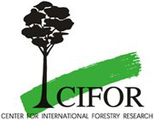The Center for International Forestry Research (CIFOR) published a report on the drivers of deforestation in Peru including the political and economic conditions under which Peru intends to achieve a national target of zero net deforestation by 2021.
 9 January 2014: The Center for International Forestry Research (CIFOR) has published a report on the drivers of deforestation in Peru, including the political and economic conditions under which Peru intends to achieve a national target of zero net deforestation by 2021.
9 January 2014: The Center for International Forestry Research (CIFOR) has published a report on the drivers of deforestation in Peru, including the political and economic conditions under which Peru intends to achieve a national target of zero net deforestation by 2021.
The report, titled ‘The Context of REDD+ in Peru: Drivers, Agents and Institutions,’ published in Spanish, reveals that national development plans and policies tend towards increased deforestation and forest degradation, especially when considering planned highway development and the expansion of energy infrastructure. According to the report, other development policies that threaten forests in Peru include the promotion of agricultural production for both domestic and international markets, and land titling processes that discourage forest conservation and sustainable use.
Additional factors contributing to deforestation outlined in the report include: the absence of long-term integrated land use planning processes; poor coordination among agencies responsible for different aspects of forest management; and a lack of implementation of existing plans and strategies, contribute to .
With REDD+ investments through both the Forest Carbon Partnership Facility (FCPF) and the UN Collaborative Programme on Reducing Emissions from Deforestation (UN-REDD), the report notes that there are significant opportunities to address deforestation if the Government takes ownership and if co-benefits are emphasized. CIFOR is a member of the Consultative Group on International Agricultural Research (CGIAR). [Publication: Contexto de REDD+ en Peru: Motores, Actores e Instituciones] [CIFOR Press Release]